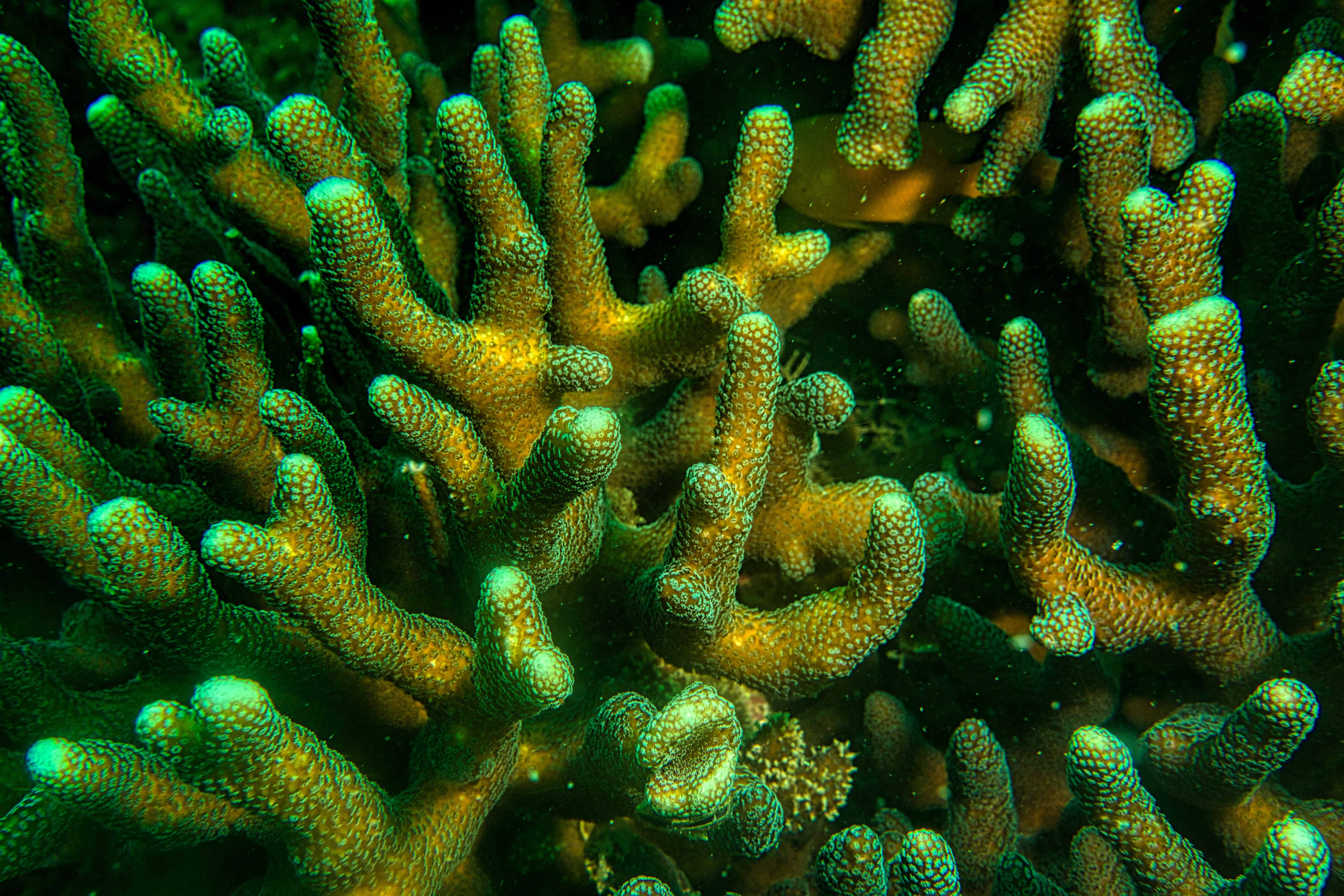Everyone will have seen a coral at some time, even if it is in photographs, and we were amazed by its shapes and colors. But... have you ever stopped to think that it's the corals? If you are not very familiar with the subject, you will probably be surprised by what we are going to reveal next.

Can you tell us what corals are: a mineral, a vegetable or an animal?
Corals are colonial organisms made up of hundreds or thousands of small animals called polyps or zooids, and share kinship with jellyfish and anemones.
Marine corals are characterized by their bright colors, but in truth, the corals (the polyps) lack color. Within the coral tissue, there are photosynthetic algae called zooxanthellae that give the coral its color. These marine microalgae maintain a symbiotic relationship with the corals. The corals provide protection and in return obtain the energy produced by the zooxanthellae through photosynthesis. In this way the corals receive 90% of the energy they need to live and use to build their skeleton and grow. Where does the coral get the other 10%? Polyps are animals and use their mouths and tentacles to capture particles suspended in the water to feed themselves.

Now that we know a little more about corals, we can see that, although many people may think that it is a marine plant or a mineral, in truth it would be many animals (polyps) living in colonies; among the tissues of which are microscopic algae that provide it with color and energy, the Zooxanthellae that is a vegetable; and finally the calcareous structure found inside that would be a mineral.
The polyps, they measure from a few millimeters to a few centimeters in diameter. There are corals that have the capacity to fix on their tissues the calcium carbonate dissolved in the sea and thus form the characteristic rigid structures. However, not all corals show this characteristic, and both hard and soft corals can be found.
Coral Reefs
Stony corals, those characterized by their hard skeleton, along with other coral species, can form large colonies on rocky surfaces located in shallow waters giving rise to reefs.

Coral reefs are one of the most valuable and diverse ecosystems on planet Earth. Despite representing less than 0.1% of the surface area of the oceans, a quarter of marine life depends on reefs (we are talking about more than 4,000 marine species). In turn, coral reefs are a major source of food for many coastal populations, providing food for more than 500 million people. Coral reefs also play a role in preserving coastlines against wave erosion by protecting thousands of coastal villages from storm surges.
Coral reefs under threat of extinction
In the last 30 years, 50% of coral reefs have disappeared. At this rate, by 2030 corals could be 90% gone, causing a devastating impact on all marine ecosystems and planet Earth. Fortunately, there is still time to take action to address climate change and the phenomena that cause coral bleaching.
ADOPT A CORAL and help us to recover the reefs, thanks to scientific advances that allow us to reproduce corals asexually and thus repopulate the most damaged areas.
Did you know that...
In the north-east of Australia, off the coast of Queensland, liesThe Great Barrier Reef, the world's largest reef, stretching 2,300 kilometres long, which can be seen from space.

Aerial view of the Great Barrier Reef in the Whitsundays, Australia. Credits: Andrew Watson.
Despite being the largest reef in the world, the Australian Great Barrier Reef has more than 600 different species of corals discovered to date. The most biodiverse place in the world is in Indonesia, located in the"Coral Triangle" in the western Pacific Ocean. It is precisely in the Indonesian archipelago that our coral farms are located to repopulate the reefs in the heart of the ocean. In this way we achieve a major positive impact on the health of marine ecosystems.


1 comment
Just wanted to ask if you would be interested in getting external help with graphic design? We do all design work like banners, advertisements, brochures, logos, flyers, etc. for a fixed monthly fee.
We don't charge for each task. What kind of work do you need on a regular basis? Let me know and I'll share my portfolio with you.